► New Nissan Concept shown in GT-R
► Created with input from Gran Turismo
► Hyper Force could be the next GT-R
The GT-R is Nissan’s Porsche 911: an icon of performance and design and a one-car distillation of all that the marque stands for, or at least strives to stand for. And so, in its 90th birthday year, Nissan’s created the Hyper Force concept. It’s not a new GT-R, sadly. But it is a pretty comprehensive set of next GT-R clues hidden within a striking concept car. It was revealed at the Tokyo mobility show earlier today.

Created with input from Polyphony Digital, the outfit behind the Gran Turismo franchise with which the GT-R is synonymous, the Hyper Force concept is a battery-electric, all-wheel drive powerhouse toting an at this point entirely fictional 1000kW, or 1341bhp.
Reliant on mass-produced solid-state battery technology (which won’t be with us until circa 2028, Nissan reckons), the Hyper Force stays true to the GT-R bloodline with flattering, user-friendly dynamics, a 2+2 layout and styling that ticks all the iconic GT-R boxes, particularly in the front and rear light signatures. The body itself is low, purposeful and recognisably GT-R despite a very zeitgeisty blend of curves and crisp-edged geometry. Nissan design’s Giovanny Arroba: ‘Imagine a chiselled blade that cuts through the air, rather than bowing down, subservient to it.’
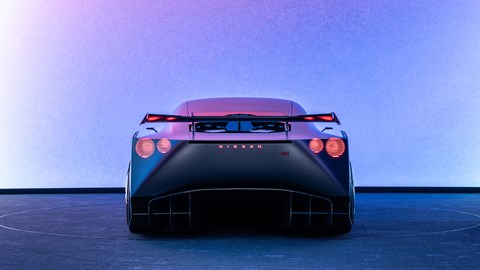
As with previous GT-Rs, high-performance four-wheel drive will let mortals tap its 1340bhp without turning the car into a pile of shattered carbon, only this time it’ll be carefully controlled e-motors doing the work, rather than a fiendishly complex mechanical drivetrain.
‘The four-wheel drive system is what makes the GT-R behave like no other sports car; it’s easier to drive and more forgiving,’ explains Nissan product planning’s Ivan Espinosa. ‘It helps you to be quicker and feel more in control of a car. It’s very predictable. With electric technology it’s easy to replicate that – it comes with a lot of tuning, a lot of detail work the same as we did years ago with the GT-R system but in a different way. It’s now software-driven; how you can control the different elements of the motors and braking and the chassis set-up. It’s interesting because it’s something we haven’t done before. It’s a discovery journey, you know, having a chassis engineer talking to the software engineer. It’s a bit of a clash but it’s working, and we’re starting to see the results.’
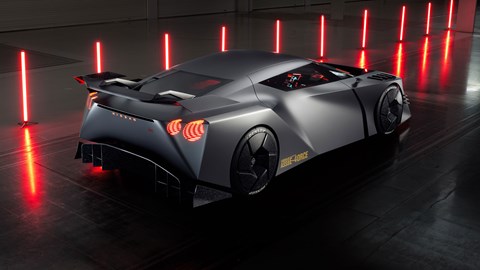
Huge downforce and active aero play their part on the Hyper Force, too, as does the ability to cut laps virtually while the car’s charging ahead of your next actual track session, the by-wire steering and immersive cockpit displays temporarily making a sim of your supercar. Then, when you do head out, the virtual and the physical might blur, the head-up display helping you optimise your lines and braking points.
Espinosa: ‘The GT-R is a driver’s car. The point is not to have the car drive for you. But you could imagine it helping you drive, right, improving your lap times? It would be really boring if the car just took control, but maybe it does this for one lap, so you get to see what the optimum lap looks like. The idea is really to help the driver become a better driver.’
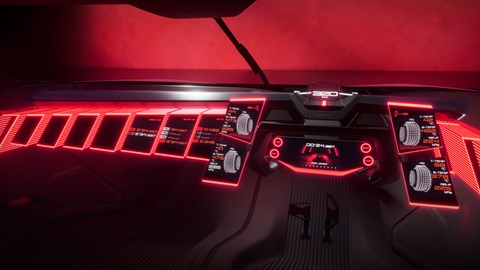
While much about the Hyper Force looks production-feasible, even elements of its outlandish interior, the script on its flanks are a clue as to the technology Nissan considers key to the car’s production timeline – solid-state batteries.
‘It all pivots around the use of all solid-state batteries,’ confirms Espinosa. The technology, which promises to drastically crank up cell power density, is key to delivering on Nissan’s performance ambitions for the next GT-R.
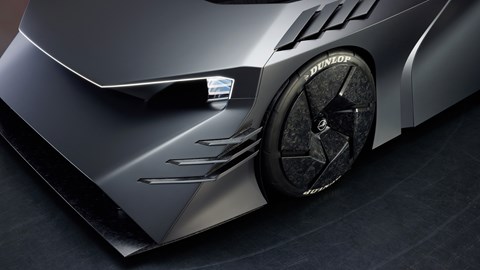
‘It’s not so much about long range,’ explains Espinosa. ‘Imagine a trackday. You want a battery that allows you to do an out lap, a couple of hot laps [at a long circuit like the ’Ring] and an in lap. Then you charge the car and in 20 minutes you’re ready to do it again. This is what we’re thinking. That’s the kind of reverse planning we’re looking at to define the size of the battery. It’s really not about driving hundreds of miles. Perhaps in future Nissans you’ll have an everyday car with a larger battery and then you have a NISMO version which is really track oriented, so you can minimise the battery and the weight and maximise the performance.’
If previous GT-Rs democratised outlandish performance in the sense that they made it accessible, they also made it almost affordable. Traditionally a performance bargain, can that possibly persist as the GT-R goes electric?
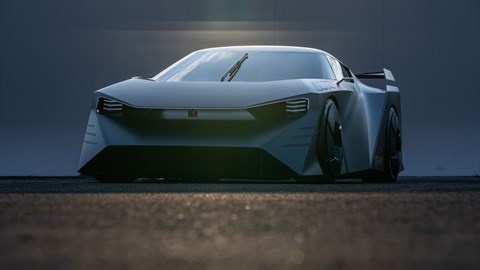
‘Probably the most difficult element of all is the affordability,’ says Espinosa. ‘This is what’s making this journey difficult, because today there’s the technology to make an electric supercar. But all these EV supercars are half a million dollars or more. So, we are working on finding the right moment, when the technology hits the right price point, so we can push it out and make an incredible GT-R. We don’t want it to be a super-exclusive car.’